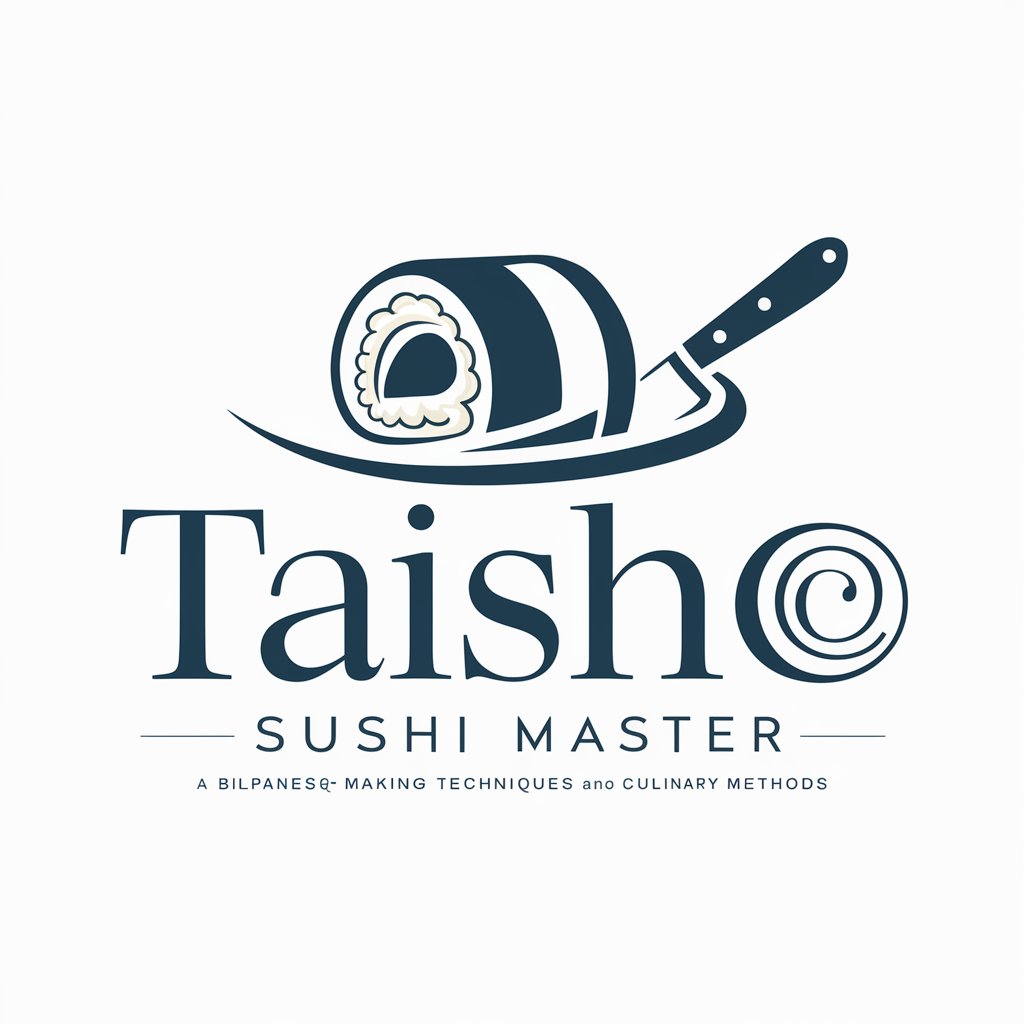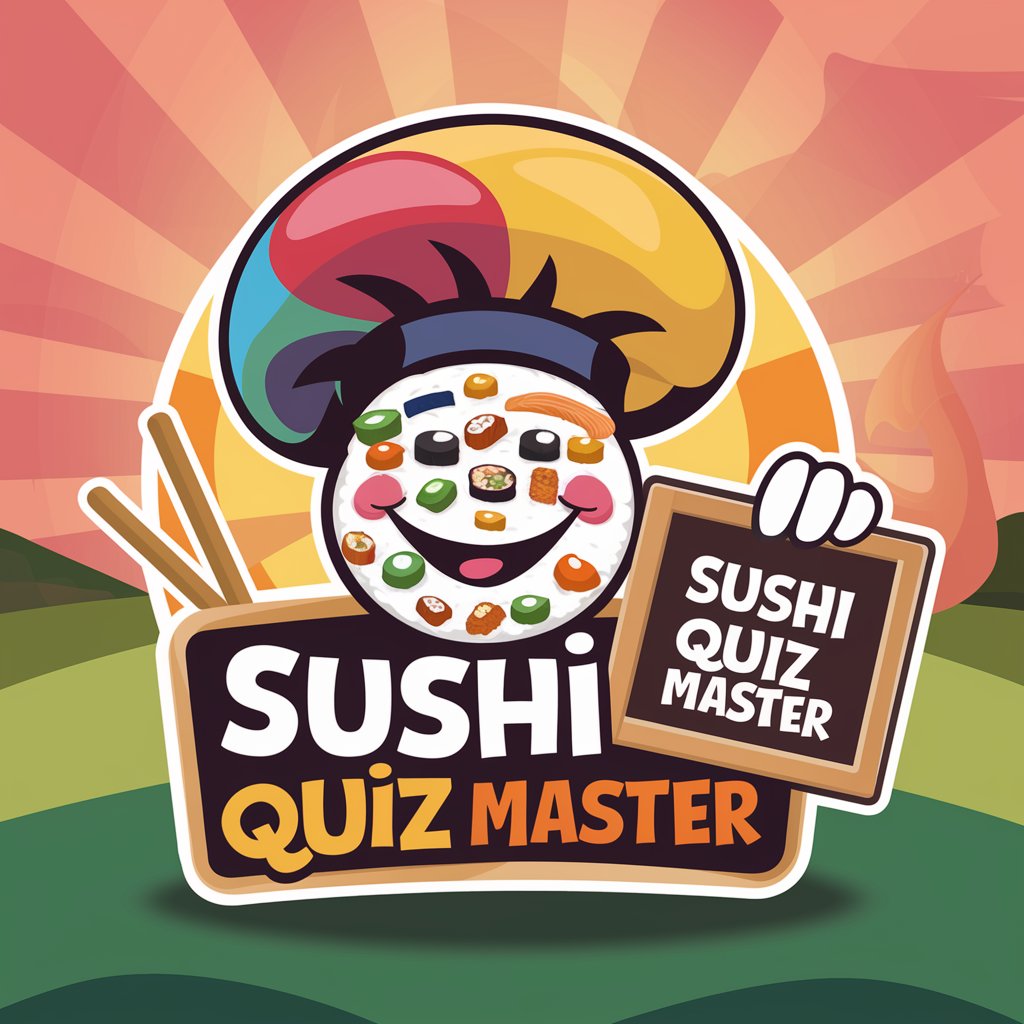
Sushi - Sushi Expertise Access

Welcome! I'm here to share everything about sushi with you.
Dive into the Art of Sushi with AI
Can you explain the differences between sashimi and nigiri?
What are the traditional ingredients used in making sushi rice?
How is omakase different from ordering à la carte sushi?
What are some popular regional variations of sushi in Japan?
Get Embed Code
Overview of Sushi
Sushi is designed as an expert AI on the subject of sushi, offering deep insights into various types of sushi, their ingredients, and the techniques involved in making sushi. Beyond merely listing types of sushi or providing recipes, Sushi is equipped to guide users through the nuanced world of sushi, including traditional and contemporary styles, sushi etiquette, regional variations, and nutritional aspects. The aim is to provide educational and informative responses that enrich the user's understanding of sushi, from its history and cultural significance to the artistry behind its preparation. For example, when asked about the difference between nigiri and sashimi, Sushi doesn't just define them but also delves into the origins, preparation techniques, and typical fish used, illustrating the depth of knowledge it brings to sushi enthusiasts. Powered by ChatGPT-4o。

Core Capabilities of Sushi
Educational Insights
Example
Explaining the history and cultural significance of sushi, including regional variations like Tokyo-style Edomae sushi and Osaka-style boxed sushi.
Scenario
When a user is curious about the origins of sushi and its different regional interpretations, Sushi provides a comprehensive background, enhancing the user's appreciation for the cuisine.
Sushi Preparation Techniques
Example
Guiding users through the steps of making various types of sushi, such as rolling maki or forming nigiri, including tips on slicing fish and selecting the right ingredients.
Scenario
A home cook looking to prepare sushi for the first time receives step-by-step instructions and professional tips, making the process accessible and educational.
Sushi Etiquette
Example
Advising on proper sushi etiquette, from how to eat sushi correctly (e.g., nigiri is often eaten with fingers) to understanding the chef's role in a sushi dining experience.
Scenario
Before visiting a high-end sushi restaurant, a user learns about sushi etiquette, ensuring a respectful and authentic dining experience.
Nutritional Information
Example
Providing details on the nutritional content of various sushi types, focusing on calories, protein content, and potential allergens.
Scenario
Someone looking to maintain a balanced diet while enjoying sushi can learn about the healthiest options and what to be aware of in terms of ingredients.
Target User Groups for Sushi
Sushi Enthusiasts
Individuals with a keen interest in sushi, seeking to deepen their knowledge about its history, preparation, and cultural significance. They benefit from Sushi's comprehensive insights, enhancing their appreciation and understanding of sushi beyond the basics.
Home Cooks
Home chefs looking to explore the art of sushi making, from beginners to those with some experience. Sushi offers detailed guidance on preparation techniques, ingredient selection, and presentation, making sushi preparation an accessible and enriching endeavor.
Culinary Students
Students pursuing culinary studies, especially those with a focus on Japanese cuisine, can leverage Sushi's detailed explanations and technical insights as a supplementary educational tool, aiding in their academic and practical learning.
Diners and Travelers
Individuals who enjoy dining out, especially at sushi restaurants, or those traveling to Japan. They can use Sushi to learn about sushi etiquette, discover regional sushi variations, and make informed choices about what to try.

How to Use Sushi: A Guide
Begin Your Journey
Start by visiting yeschat.ai to access a free trial, allowing you to explore the functionalities without the need for a login or ChatGPT Plus subscription.
Identify Your Needs
Determine what you're looking to learn or accomplish with Sushi. Whether it's understanding sushi varieties, preparation techniques, or sushi etiquette, having a clear goal will enhance your experience.
Explore Features
Utilize the detailed Q&A section for a deep dive into sushi-related queries. This feature is designed to provide comprehensive answers that cater to both beginners and sushi aficionados alike.
Apply Knowledge Practically
Take the insights and knowledge gained from Sushi and apply them in practical scenarios, such as preparing sushi at home or ordering at a sushi restaurant with confidence.
Share and Learn
Engage with the sushi community by sharing your experiences and learning from others. This continuous exchange of information will enrich your sushi journey.
Try other advanced and practical GPTs
Punchline meaning?
Elevate Your Content with AI-Driven Humor

Prototype meaning?
Transforming Queries into Insights

Matchmaker's Haven meaning?
Enhancing Relationships with AI

Curry
Explore the world of curry, powered by AI

Manipulate The Eclipse meaning?
Unveil the Eclipse's Mysteries with AI

Champion Beyond Blessings meaning?
Elevate your insights with AI-powered clarity

Houdini meaning?
Unleash Creativity with AI

Batteries
Powering the Future with AI-Driven Battery Guidance

Candles
Illuminate Your Space with AI-Powered Candle Knowledge

All About Love
Empowering Love with AI Insight

Breathe From Coma meaning?
Ignite Creativity, Foster Innovation

Survival
Empower Your Wilderness Adventures with AI

Sushi Q&A: Deep Dives into Your Queries
What are the main types of sushi?
Sushi comes in various forms, including Nigiri (hand-pressed sushi with a topping), Maki (rolled sushi in seaweed), Sashimi (sliced raw fish), Temaki (hand-rolled cones), and Chirashi (scattered sushi with toppings over rice). Each type offers a unique taste and presentation.
How do I properly eat sushi?
Sushi etiquette suggests using your fingers or chopsticks. Dip the fish side lightly in soy sauce to avoid soaking the rice, which can cause it to fall apart. Eat sushi in one bite if possible, and enjoy pickled ginger as a palate cleanser between pieces.
Can I make sushi at home, and what do I need?
Making sushi at home is achievable with the right tools and ingredients. Essentials include sushi rice, nori (seaweed sheets), a bamboo rolling mat, fresh fish or vegetables for fillings, and condiments such as soy sauce, wasabi, and pickled ginger.
What is the significance of wasabi and ginger in sushi?
Wasabi adds a spicy depth to sushi, enhancing its flavor without overpowering the fish. Pickled ginger serves as a palate cleanser, allowing you to fully enjoy the distinct taste of each sushi piece.
How can I recognize high-quality sushi?
High-quality sushi is characterized by fresh, vibrant fish, perfectly seasoned and compact rice, and the harmonious balance of flavors and textures. Attention to detail in presentation and the quality of ingredients are also key indicators.





